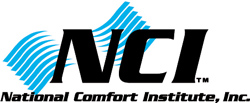Measuring static pressure on air handling equipment that has variable-speed fans can be a challenge to both new and experienced technicians. By addressing a few details, your readings will be consistent when you encounter this blower type. Let’s look at three tips you can use the next time you measure static pressure on a variable-speed fan.
Tip #1: Have the Fan Manufacturer’s
Equipment Data
One big pitfall for technicians measuring static pressure on variable speed fans is not having the manufacturer’s equipment data handy. Without this valuable information, your diagnosis of the system is limited and just a guess.
Dip switches often control the settings on these blowers. From the manufacturer data, you interpret dip switch settings on the control board. This will verify the fan is set correctly before testing. It’s always possible a previous technician adjusted dip switch settings lower to cure a previous noise complaint from the homeowner. NOTE: factory-default settings might not be the correct position either. Check dip switch settings to make sure the fan matches the outdoor unit capacity.
In your search for this information, you’ll find some manufacturers make their equipment data very accessible. Others require you to jump through hoops for it. If you have any issues, send me an email and I’ll share my tips for finding equipment data.
Tip #2: Don’t Use “Fan-On”
Another common mistake made is to turn the thermostat fan switch setting to the “on” position. While this may seem like a harmless way to test, it can disguise airflow restrictions due to the way equipment responds to this input.
Many equipment manufacturers have their variable-speed equipment set to run at 50% or less of the programmed airflow with the fan switch on. A three-ton system programmed for 1200 cfm of airflow at 100%, would only move 600 cfm or less at this setting.
If you’re using static pressure to uncover airflow restrictions, those restrictions will be masked by turning on the fan switch. Let equipment run in its normal operation to best repeat real conditions. Ideally, you want to test in cooling mode with a wet coil.
Tip #3: Make Sure the Fan is Operating at 100% Airflow
In addition to fan speed settings, dip switches also help you determine the ramping profile used by the blower. The profile tells you how quickly the fan will reach 100% of its programmed airflow. Depending on the selected ramping profile, there could be a significant delay before this occurs.
It’s very easy to take questionable static pressure readings due to rushing and measuring too soon. It gets really goofy when you take readings as a system ramps up between measurements. This is where manufacturer data ties back in.
Ramping profiles vary based on dip-switch selection and you need manufacturer data to interpret them just like you do with fan speed settings. The manufacturer data tells you what the ramping profile is without any guesswork. If an aggressive dehumidification profile is programmed into the blower, you may need to wait 12 minutes before you can measure static pressure at 100% airflow.
Know the Equipment
In the end, it boils down to you knowing the equipment you’re testing. If you’re unfamiliar with it, take the time to review any information you can find. You might save yourself hours of frustration with five minutes spent in the manufacturer’s installation instructions. Remember, attention to detail is what separates the professionals from the posers.
David Richardson serves the HVAC industry as a curriculum developer and trainer at National Comfort Institute, Inc. (NCI). NCI specializes in training focused on improving, measuring, and verifying HVAC and Building Performance.
If you’re an HVAC contractor or technician interested in an easier way to locate equipment information, contact David at davidr@ncihvac.com or call him at 800-633-7058. NCI’s website www.nationalcomfortinstitute.com is full of free technical articles and downloads to help you improve your professionalism and strengthen your company.






Leave a Reply
You must be logged in to post a comment.